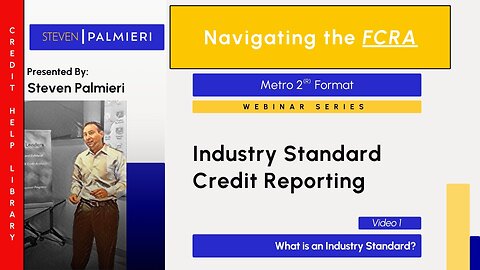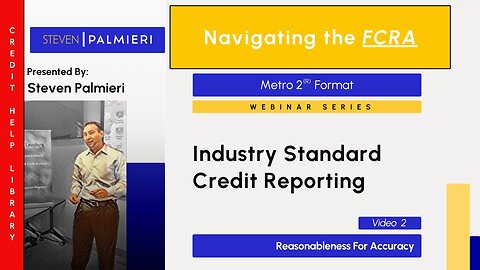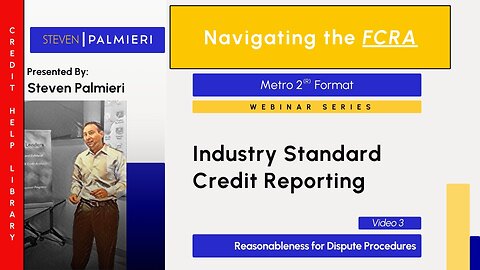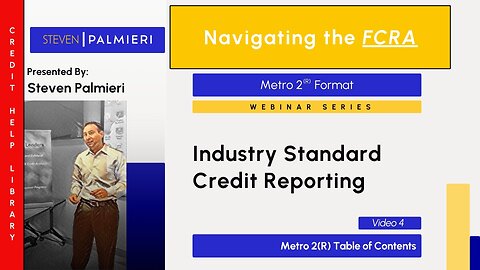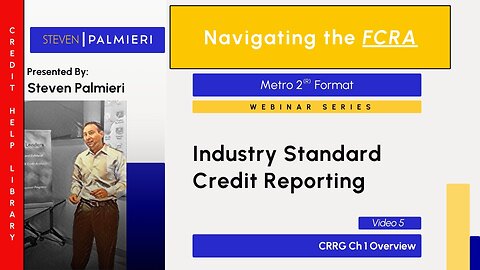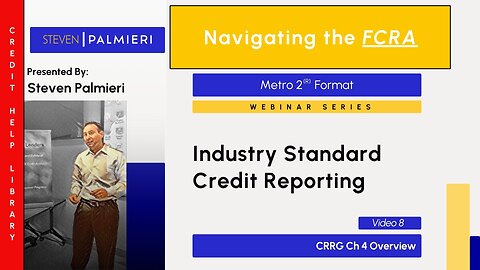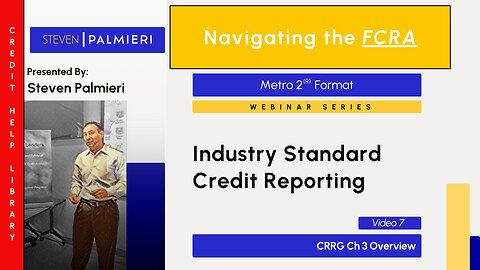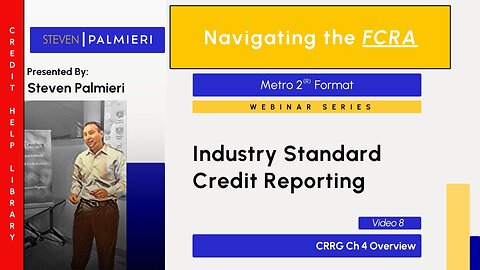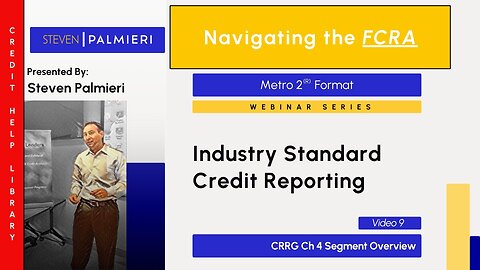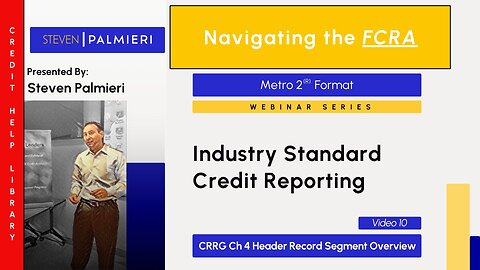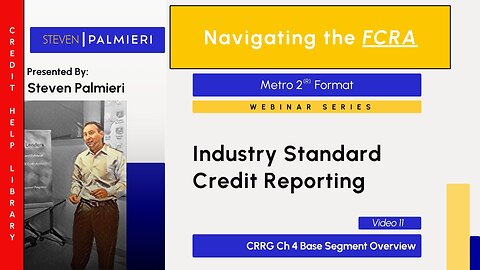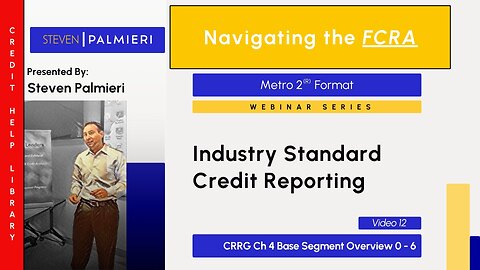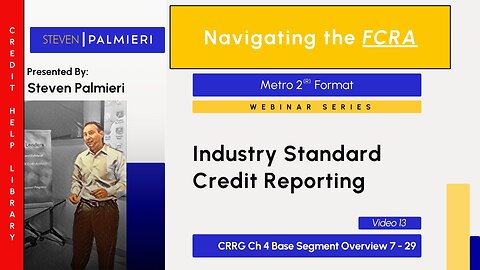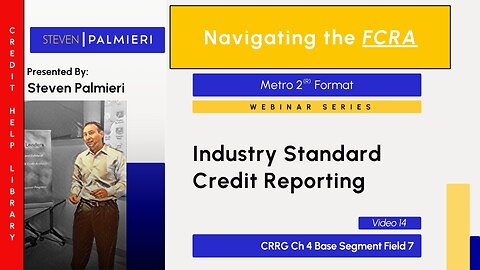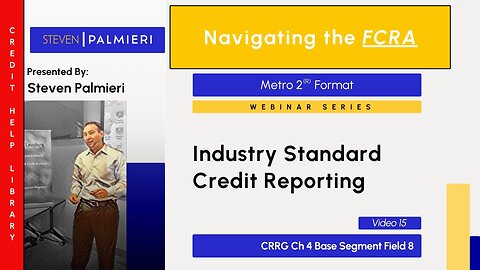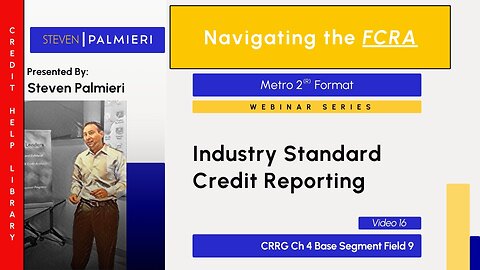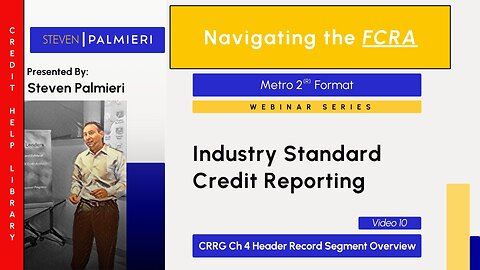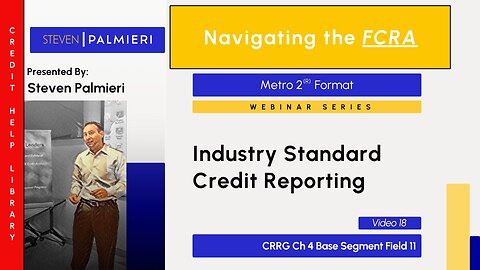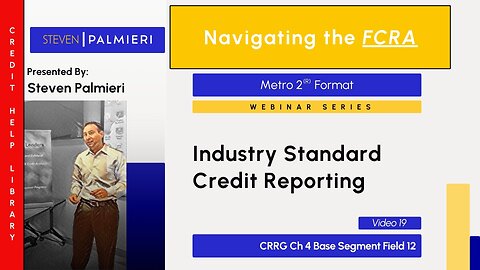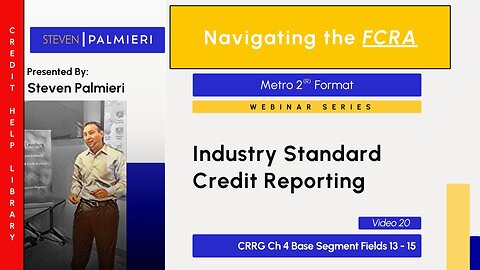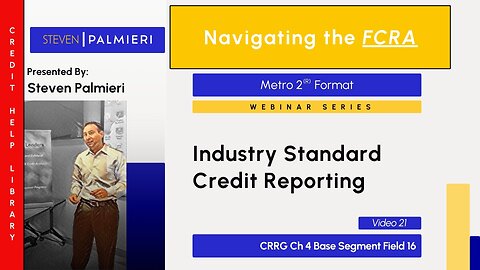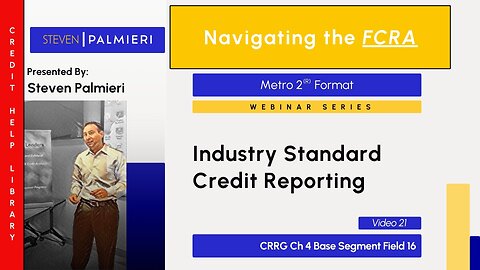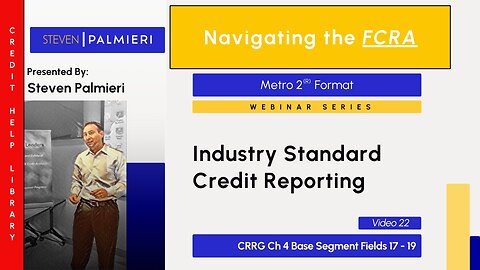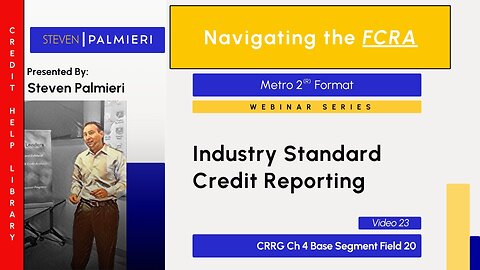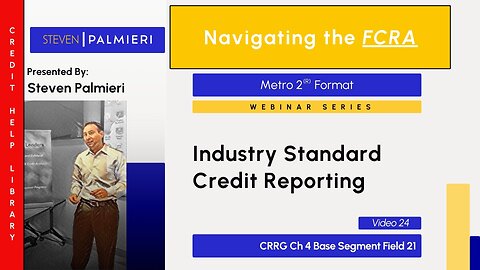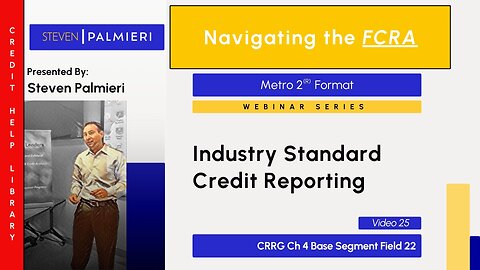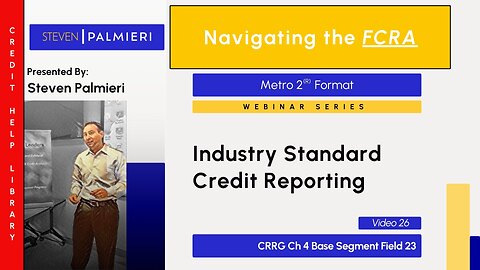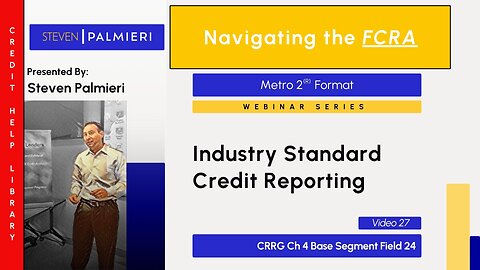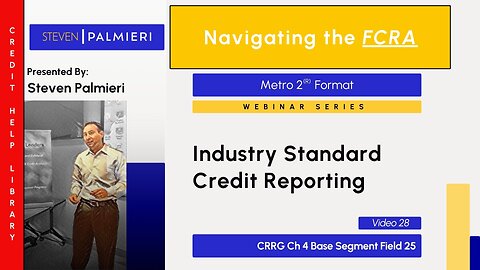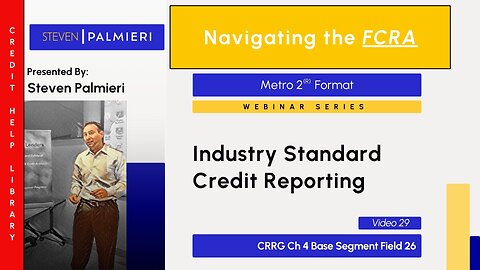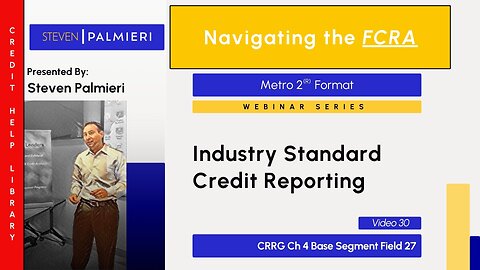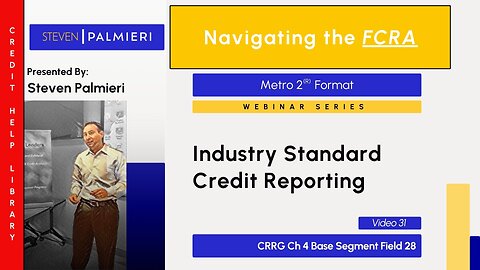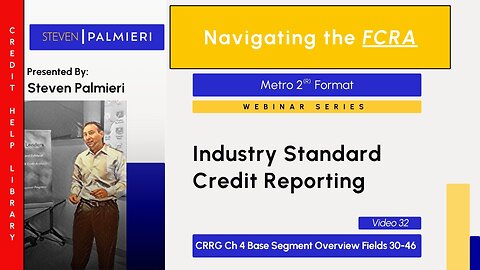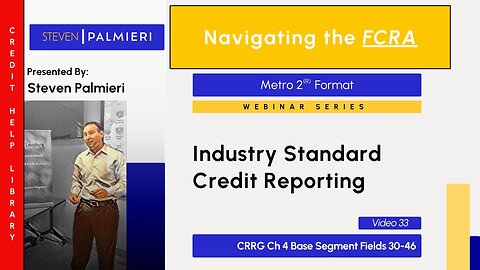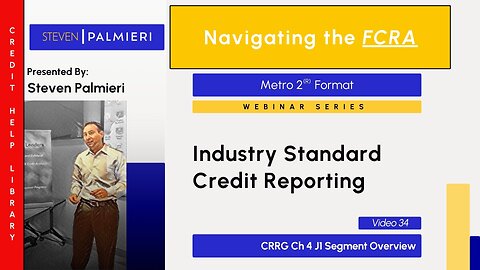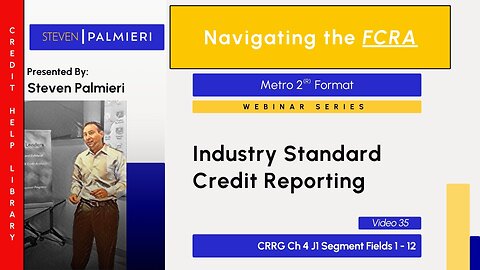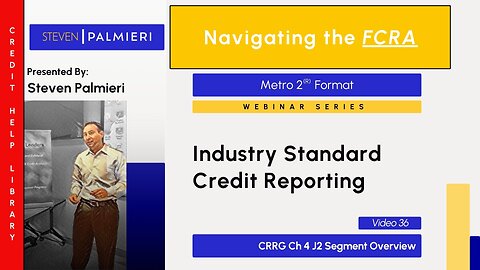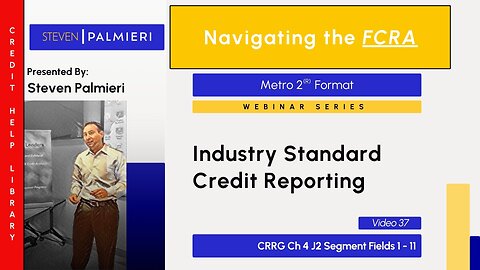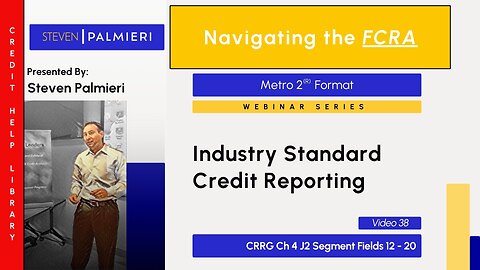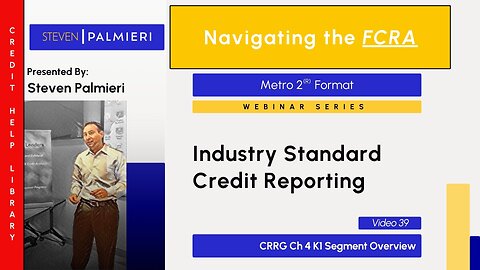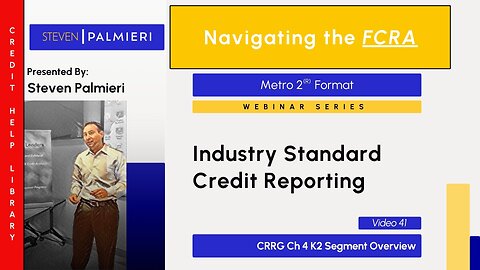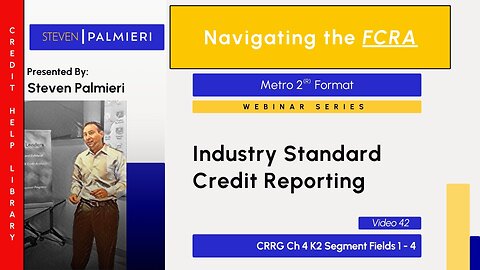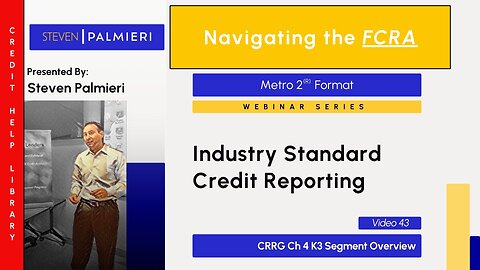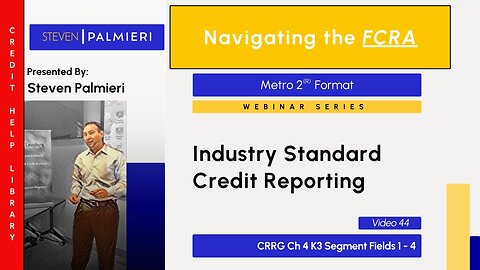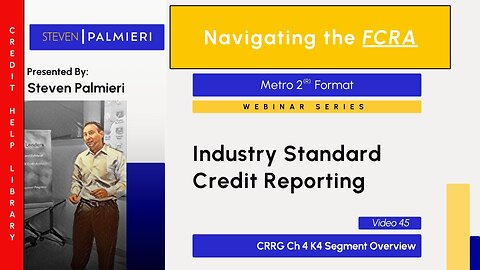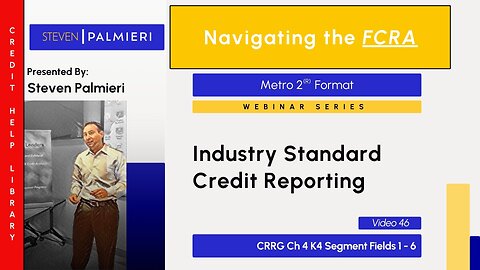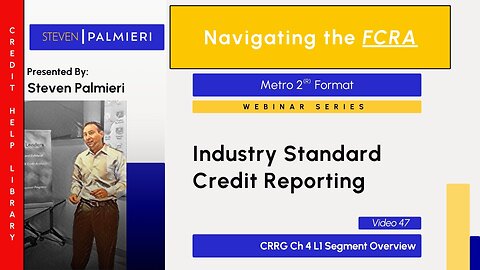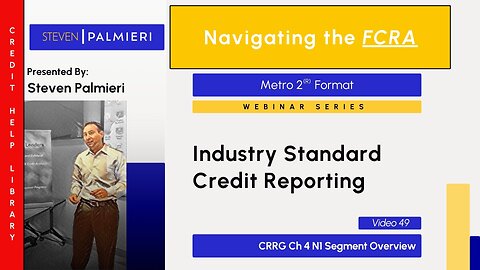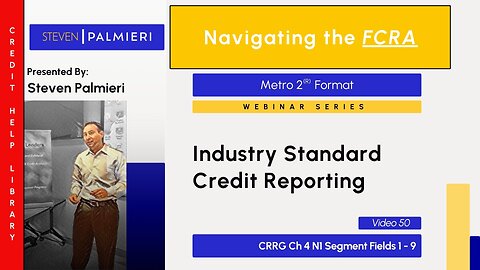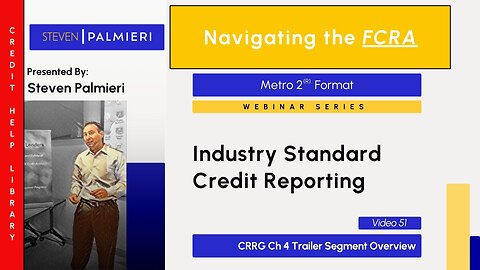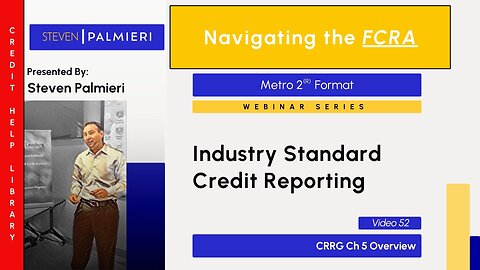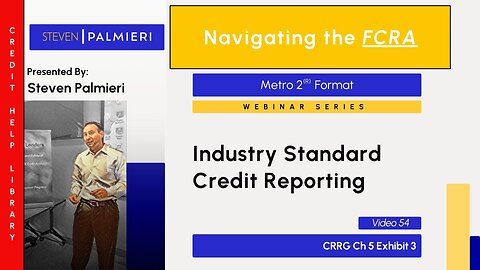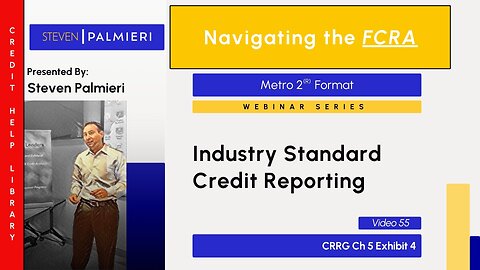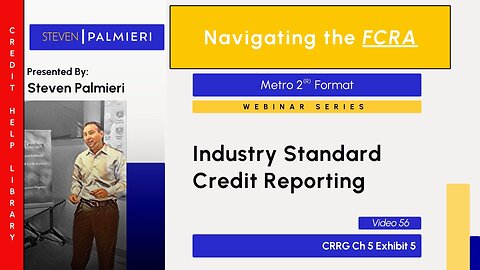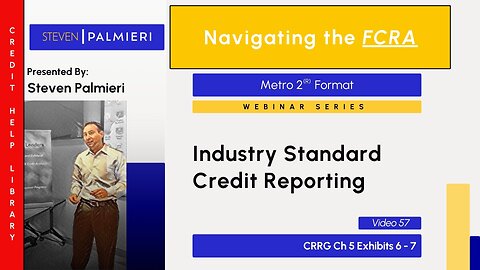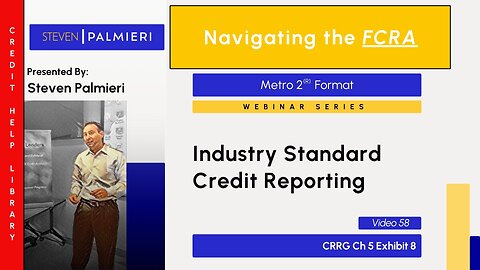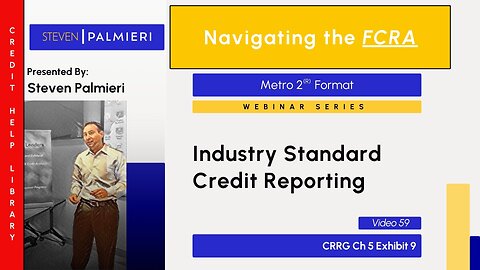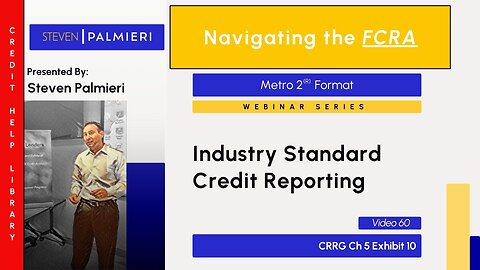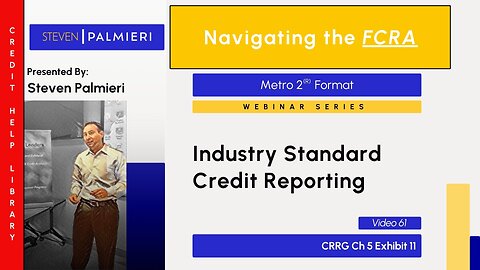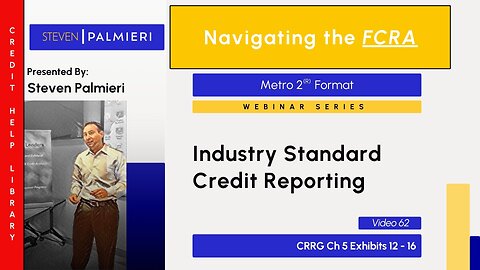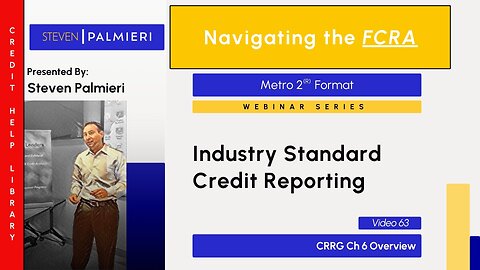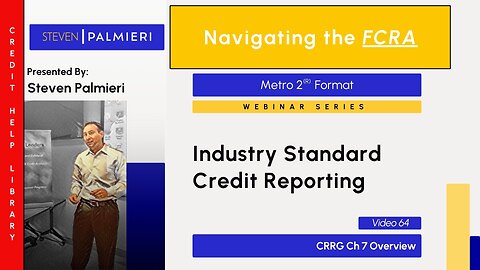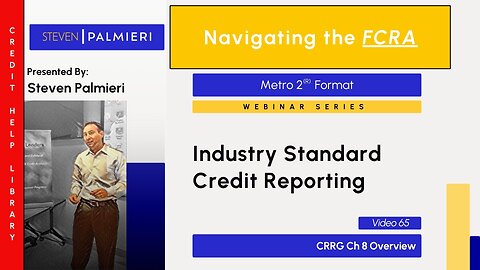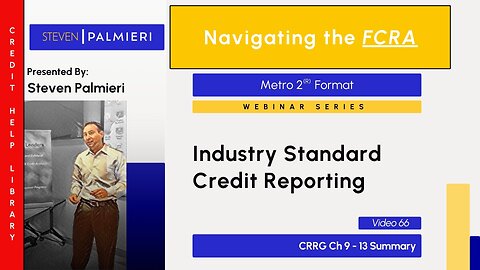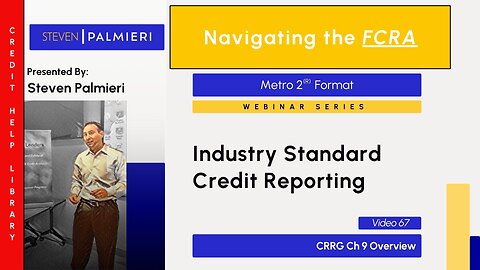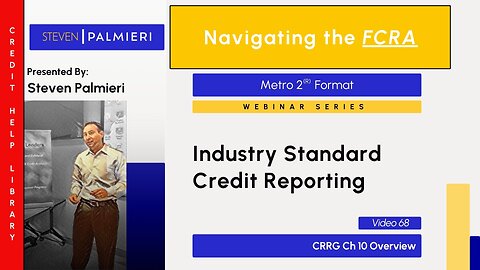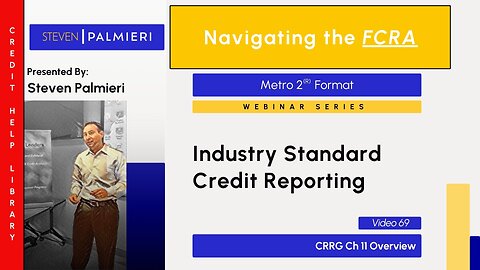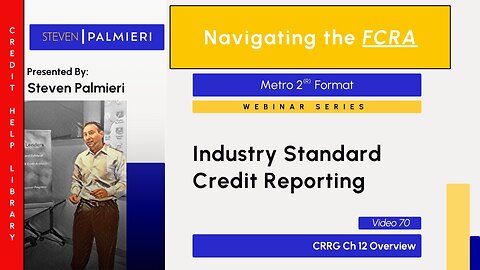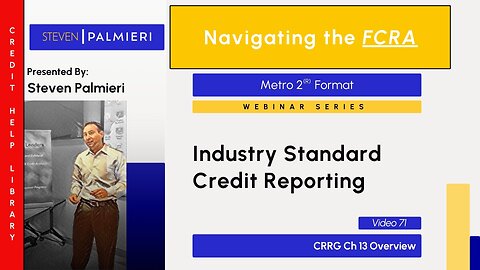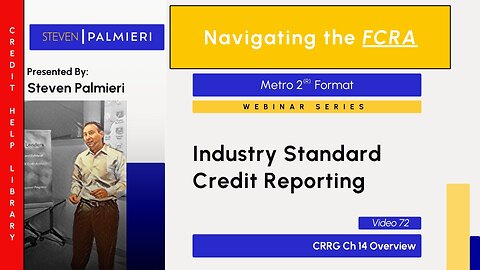Premium Only Content
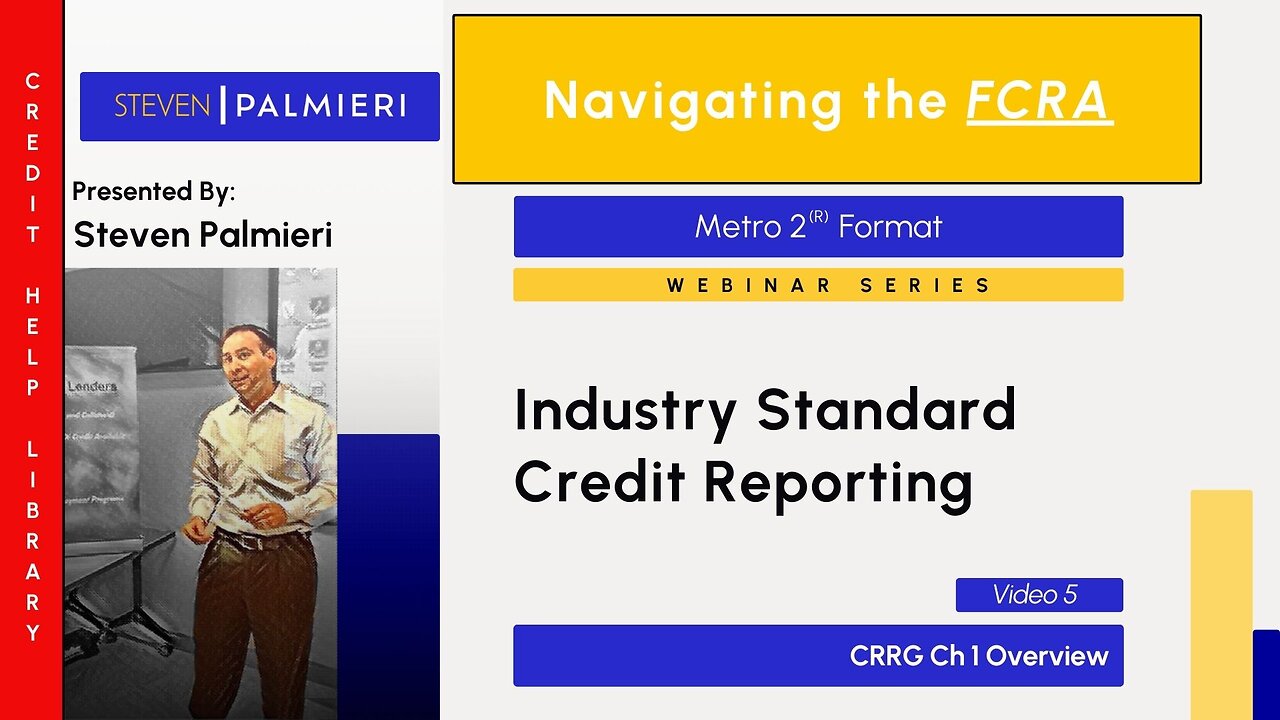
What is an Industry Standard
Reasonableness for Accuracy
Reasonableness for Dispute Procedures
Metro 2 Table of Contents
Ch 1 Overview
Ch 2 Overview
Ch 3 Overview
Ch 4 Overview
Ch 4 Segment Overview
Ch 4 Header Record Segment Overview
Ch 4 Base Segment Overview
Ch 4 Base Segment Overview Fields 0 - 6
Ch 4 Base Segment Overview Fields 7 - 29
Ch 4 Base Segment Field 7
Ch 4 Base Segment Field 8
Ch 4 Base Segment Field 9
Ch 4 Base Segment Field 10
Ch 4 Base Segment Field 11
Ch 4 Base Segment Field 12
Ch 4 Base Segment Fields 13 - 15
Ch 4 Base Segment Field 16
Ch 4 Base Segment Field 16
Ch 4 Base Segment Fields 17 - 19
Ch 4 Base Segment Field 20
Ch 4 Base Segment Field 21
Ch 4 Base Segment Field 22
Ch 4 Base Segment Field 23
Ch 4 Base Segment Field 24
Ch 4 Base Segment Field 25
Ch 4 Base Segment Field 26
Ch 4 Base Segment Field 27
Ch 4 Base Segment Field 28
Ch 4 Base Segment Overview 30 - 46
Ch 4 Base Segment Fields 30 - 46
Ch 4 J1 Segment Overview
Ch 4 J1 Segment Fields 1 - 12
Ch 4 J2 Segment Overview
Ch 4 J2 Segment Fields 1 - 11
Ch 4 J2 Segment Fields 12 - 20
Ch 4 K1 Segment Overview
Ch 4 K1 Segment Fields 1 - 3
Ch 4 K2 Segment Overview
Ch 4 K2 Segment Fields 1 - 4
Ch 4 K3 Segment Overview
Ch 4 K3 Segment Fields 1 - 4
Ch 4 K4 Segment Overview
Ch 4 K4 Segment Fields 1 - 6
Ch 4 L1 Segment Overview
Ch 4 L1 Segment Fields 1 - 5
Ch 4 N1 Segment Overview
Ch 4 N1 Segment Fields 1 - 9
Ch 4 Trailer Segment Overview
Ch 5 Overview
Ch 5 Exhibit 1 - 2
Ch 5 Exhibit 3
Ch 5 Exhibit 4
Ch 5 Exhibit 5
Ch 5 Exhibits 6 - 7
Ch 5 Exhibit 8
Ch 5 Exhibit 9
Ch 5 Exhibit 10
Ch 5 Exhibit 11
Ch 5 Exhibits 12 - 16
Ch 6 Overview
Ch 7 Overview
Ch 8 Overview
Ch 9 - 13 Summary
Ch 9 Overview
Ch 10 Overview
Ch 11 Overview
Ch 12 Overview
Ch 13 Overview
Ch 14 Overview
Ch 1 Overview
The video summarizes Chapter 1 of the Metro 2 Credit Reporting Resource Guide, focusing on the roles and responsibilities of parties involved in the Metro 2 format, which is key for readers aiming to accurately read credit reports, identify errors, and draft dispute letters to consumer reporting agencies (CRAs). This brief chapter emphasizes that credit information is sensitive, requiring accuracy, completeness, and fairness to consumers. These responsibilities extend beyond CRAs to include furnishers (e.g., credit grantors like Capital One or Midland Credit Management). Key players outlined include the Consumer Data Industry Association (CDIA, the credit bureaus’ trade group), CRAs, the Metro 2 Format Task Force, the E-OSCAR support team, data furnishers, and regulators like the CFPB and FTC. Understanding these roles helps readers grasp who is accountable for maintaining Metro 2 compliance, enabling them to pinpoint inaccuracies in credit reports and reference these responsibilities in disputes with CRAs.
-
 LIVE
LIVE
SLS - Street League Skateboarding
18 days agoSLS Paris 2025 🛹 | OCTOBER 11, 2025
13,187 watching -
 LIVE
LIVE
LFA TV
10 hours agoTHE RUMBLE RUNDOWN LIVE @9AM EST
2,782 watching -
 UPCOMING
UPCOMING
Wendy Bell Radio
4 hours agoPet Talk With The Pet Doc
1.49K5 -
 8:47
8:47
Demons Row
2 days agoI Spent $50,000 Building My Dream Harley-Davidson 😳💀 (Learn From My Mistakes)
741 -
 38:18
38:18
SouthernbelleReacts
18 hours agoThey Thought the Secret Was Buried… But I’m Screaming! | Reaction to I Know What You Did Last Summer
29 -
 29:37
29:37
Midwest Crime
1 day ago5 Cops Shot as Minnesota Raid Turns into Chaos
32.6K108 -
 31:08
31:08
mizery
17 days agoI Asked 100 Pros To Help Me Go Pro...
13 -
 LIVE
LIVE
FyrBorne
12 hours ago🔴Battlefield 6 Live M&K Gameplay: A Return to Form for This Former Giant
290 watching -
 3:40
3:40
Danny Rayes
2 days agoInfluencers Are Going Broke. What Happened?
12 -
 11:08
11:08
It’s the Final Round
15 hours ago $2.30 earned💰NFL Week 6 Best Bets🔥Player Prop Picks, Parlays, Predictions FREE Today October 12th
11.3K4
